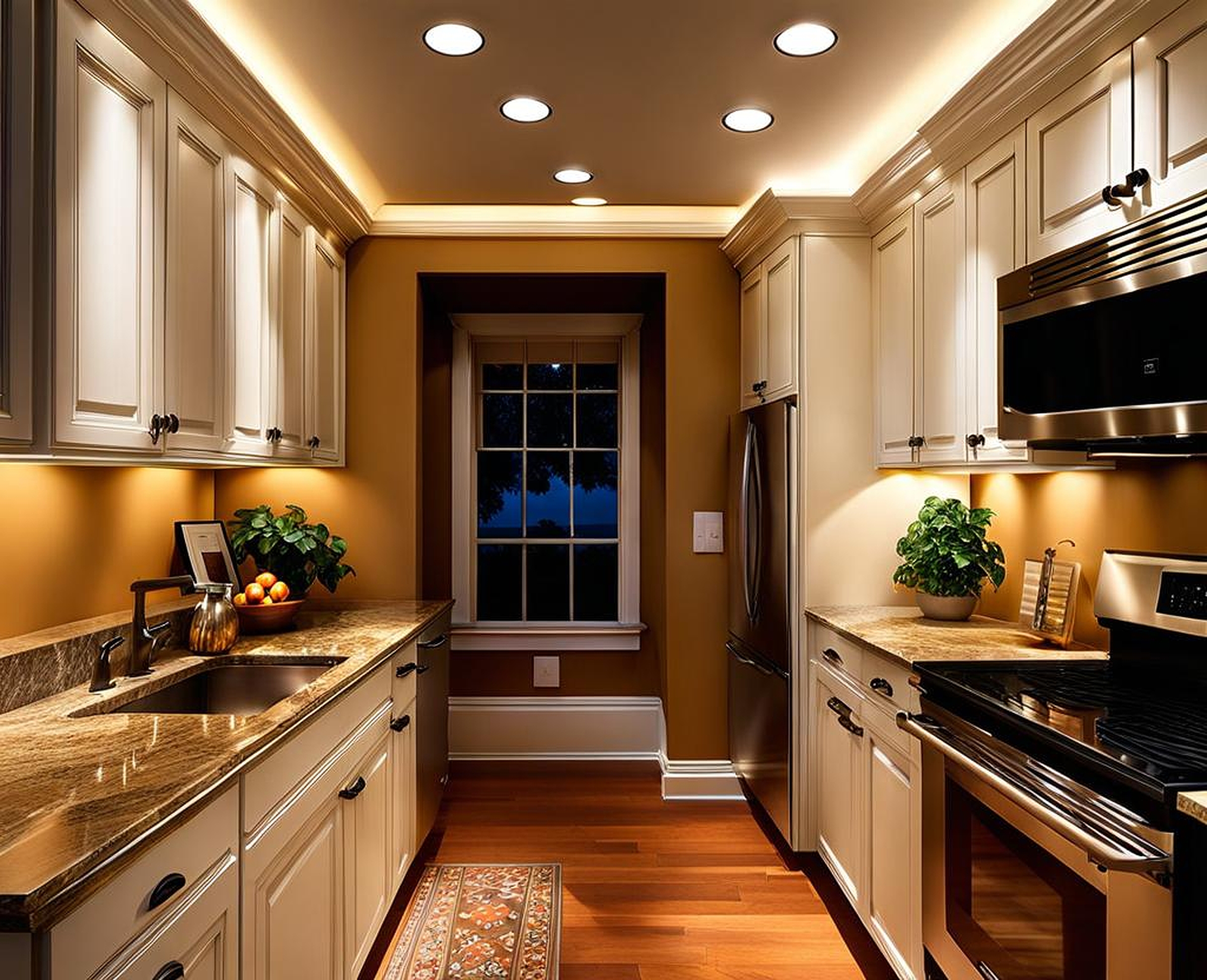Proper lighting is essential in any kitchen, not just for functionality but also for creating a warm and inviting atmosphere. Can lights, also known as recessed lights, are a popular choice for kitchen lighting as they offer a sleek and modern look while providing excellent illumination. However, the strategic placement of can lights is crucial to achieve the desired lighting effect. This comprehensive guide will help you maximize the benefits of can lights in your kitchen by understanding the key placement considerations and techniques.
Can Lights Kitchen Placement: Illuminating Essentials
Kitchens are multifunctional spaces where various tasks are performed, from cooking and meal preparation to dining and entertaining. Proper lighting is essential for ensuring safety, enhancing visibility, and creating a pleasant ambiance. Can lights offer several advantages for kitchen lighting, including:
- Uniform and evenly distributed illumination
- Ability to highlight specific areas or work zones
- Energy efficiency and long-lasting bulbs
- Versatility in terms of placement and adjustability
- Clean and unobtrusive look that complements various kitchen styles
When planning the placement of can lights in your kitchen, it’s crucial to consider factors such as the kitchen layout, work zones, ambient and accent lighting needs, and the avoidance of shadows and dark spots.
Strategic Placement: Key Considerations
To ensure optimal lighting in your kitchen, it’s essential to understand the various work zones and their specific lighting requirements. Here are some key considerations for strategic can light placement:

Kitchen Layout and Work Zones
Identify the primary work zones in your kitchen, such as the cooking area, prep area, cleaning area, and dining area. Each zone may have different lighting needs based on the tasks performed. For example, the cooking area may require brighter task lighting, while the dining area may benefit from softer ambient lighting.
Task Lighting Requirements
Can lights are ideal for providing focused task lighting in areas where detailed work is performed, such as the countertops and kitchen islands. Proper task lighting ensures visibility and reduces eye strain, making it easier to chop vegetables, read recipes, or perform other intricate tasks.
Ambient and Accent Lighting Needs
In addition to task lighting, can lights can also contribute to the overall ambient lighting in your kitchen. Strategically placed can lights can create a warm and inviting atmosphere, while accent lighting can highlight architectural features, artwork, or decorative elements.
Avoiding Shadows and Dark Spots
One of the main challenges in kitchen lighting is avoiding shadows and dark spots caused by cabinets, appliances, or other obstructions. Proper can light placement can help minimize these issues by providing even and balanced illumination throughout the space.
Can Lights Placement Guide: Step-by-Step
Now that you understand the key considerations, let’s dive into the step-by-step process of strategically placing can lights in your kitchen:
Determining the Number of Can Lights Needed
The number of can lights required for your kitchen will depend on the size of the space, the desired level of illumination, and the specific lighting requirements of each work zone. As a general rule, you should aim for one can light for every four to six square feet of ceiling space.
Spacing and Positioning Guidelines
Proper spacing and positioning of can lights are crucial for achieving even and balanced illumination. Generally, can lights should be spaced between three to six feet apart, depending on the height of your ceiling and the beam angle of the lights. Positioning them in a grid or linear pattern can create a visually appealing and functional layout.
Placement Patterns
There are several placement patterns you can consider for your can lights, including:
- Grid pattern: A grid pattern is a popular choice for creating a uniform and balanced look in your kitchen. This pattern is especially suitable for open-concept spaces or large kitchens.
- Linear pattern: A linear pattern involves aligning can lights in a straight line, often along countertops or kitchen islands. This pattern can help create a sense of flow and direction.
- Accent pattern: Accent patterns involve strategically placing can lights to highlight specific features or areas, such as artwork, shelving, or architectural details.
Aligning Can Lights with Kitchen Features
When positioning can lights, it’s essential to align them with key kitchen features, such as cabinets, islands, and countertops. This not only enhances the functionality of the lighting but also creates a cohesive and visually appealing design.
Enhancing Kitchen Lighting with Can Lights
While can lights are a versatile and practical lighting solution, they can also be combined with other lighting fixtures to create a layered and visually appealing lighting design. Here are some tips for enhancing your kitchen lighting with can lights:
Combining Can Lights with Other Lighting Fixtures
Consider incorporating other lighting fixtures, such as pendant lights over kitchen islands or under-cabinet lighting, to create a well-balanced and functional lighting scheme. The combination of different lighting sources can add depth, dimension, and visual interest to your kitchen.
Dimming and Control Options
Invest in a dimming system or smart lighting controls to adjust the brightness and ambiance of your can lights according to your needs. This versatility allows you to create the perfect lighting atmosphere for different activities, such as cooking, dining, or entertaining.
Selecting the Right Trim and Bulb Types
Can lights come in various trim styles and finishes, allowing you to choose options that complement your kitchen’s overall design aesthetic. Additionally, consider energy-efficient LED bulbs or bulbs with adjustable color temperatures to enhance the warmth and ambiance of your kitchen lighting.
When selecting can lights and bulbs, opt for energy-efficient options that not only save you money on your utility bills but also contribute to a more sustainable and eco-friendly lifestyle.
By following these guidelines and considering the strategic placement of can lights in your kitchen, you can create a well-lit and inviting space that not only enhances functionality but also adds to the overall aesthetic appeal of your kitchen.